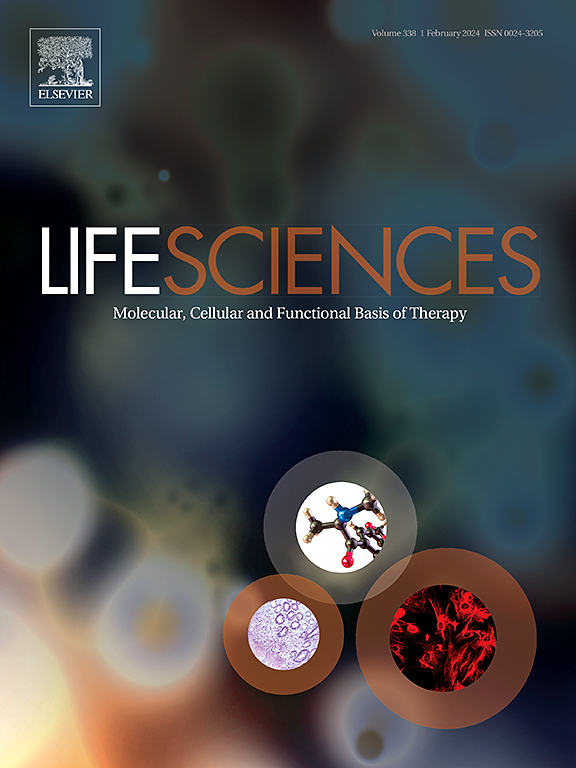Mechanistic insights into the renoprotective effects of artesunate in cisplatin-induced acute kidney injury
IF 5.1
2区 医学
Q1 MEDICINE, RESEARCH & EXPERIMENTAL
引用次数: 0
Abstract
Acute kidney injury (AKI) is a severe clinical syndrome marked by rapid renal function decline. Cisplatin (Cis) is a commonly used chemotherapy agent; however, its clinical application has been restricted due to its nephrotoxicity. Artesunate (ART), derived from Artemisia annua, has potent anti-inflammatory and antioxidant properties. However, its potential to mitigate cisplatin-induced AKI has yet to be fully investigated. This study investigates ART's protective effects against cisplatin-induced AKI and explores its molecular mechanisms. In vivo experiments on C57BL/6 mice were divided into control, cisplatin, and cisplatin + ART groups with different doses. Kidney tissues were analyzed histologically and molecularly. In vitro, HK-2 cells were used to assess cell viability, apoptosis, oxidative stress, and ferroptosis. Network pharmacology and molecular docking predicted ART's targets and interactions. Results demonstrated that ART significantly reduced serum creatinine (Scr) and blood urea nitrogen (BUN) levels, while concurrently improving renal histopathological features. In vitro, ART enhanced cell viability, reduced apoptosis, and decreased reactive oxygen species (ROS). ART increased glutathione (GSH) levels and reduced malondialdehyde (MDA) and Fe2+ levels. ART restored mitochondrial membrane potential and ultrastructure in cisplatin-treated cells and upregulated key proteins in the ferroptosis pathway, including GSK3β, PARP1, SLC7A11, and GPX4. Molecular docking studies predict that ART interacts with GSK3β and PARP1. ART significantly alleviates cisplatin-induced acute kidney injury by inhibiting ferroptosis through the GSK3β/PARP1/SLC7A11 signaling pathway. This study provides strong evidence for the therapeutic potential of ART in AKI and highlights the need for further research into its molecular mechanisms and clinical applications.
青蒿琥酯在顺铂诱导的急性肾损伤中的肾保护作用机制。
急性肾损伤是一种以肾功能迅速下降为特征的严重临床综合征。顺铂(Cis)是一种常用的化疗药物;然而,由于其肾毒性,其临床应用受到限制。青蒿琥酯(ART),从黄花蒿中提取,具有有效的抗炎和抗氧化特性。然而,其减轻顺铂诱导AKI的潜力尚未得到充分研究。本研究探讨抗逆转录病毒治疗对顺铂诱导AKI的保护作用,并探讨其分子机制。体内实验将C57BL/6小鼠分为不同剂量的对照组、顺铂组、顺铂+ ART组。对肾组织进行组织学和分子分析。在体外,HK-2细胞被用来评估细胞活力、凋亡、氧化应激和铁下垂。网络药理学和分子对接预测ART的靶点和相互作用。结果表明,ART可显著降低血清肌酐(Scr)和血尿素氮(BUN)水平,同时改善肾脏组织病理特征。在体外,ART可提高细胞活力,减少细胞凋亡,降低活性氧(ROS)。ART增加谷胱甘肽(GSH)水平,降低丙二醛(MDA)和Fe2+水平。ART恢复顺铂处理细胞的线粒体膜电位和超微结构,上调铁凋亡途径中的关键蛋白,包括GSK3β、PARP1、SLC7A11和GPX4。分子对接研究预测ART与GSK3β和PARP1相互作用。ART通过GSK3β/PARP1/SLC7A11信号通路抑制铁下垂,显著缓解顺铂诱导的急性肾损伤。本研究为ART治疗AKI的潜力提供了强有力的证据,并强调了进一步研究其分子机制和临床应用的必要性。
本文章由计算机程序翻译,如有差异,请以英文原文为准。
求助全文
约1分钟内获得全文
求助全文
来源期刊

Life sciences
医学-药学
CiteScore
12.20
自引率
1.60%
发文量
841
审稿时长
6 months
期刊介绍:
Life Sciences is an international journal publishing articles that emphasize the molecular, cellular, and functional basis of therapy. The journal emphasizes the understanding of mechanism that is relevant to all aspects of human disease and translation to patients. All articles are rigorously reviewed.
The Journal favors publication of full-length papers where modern scientific technologies are used to explain molecular, cellular and physiological mechanisms. Articles that merely report observations are rarely accepted. Recommendations from the Declaration of Helsinki or NIH guidelines for care and use of laboratory animals must be adhered to. Articles should be written at a level accessible to readers who are non-specialists in the topic of the article themselves, but who are interested in the research. The Journal welcomes reviews on topics of wide interest to investigators in the life sciences. We particularly encourage submission of brief, focused reviews containing high-quality artwork and require the use of mechanistic summary diagrams.
 求助内容:
求助内容: 应助结果提醒方式:
应助结果提醒方式:


